What is Wat Phou?
First of all, we will learn a little bit about the place that host the festival. Wat Phou, which translates to “mountain temple”, was initially dedicated to Shiva, one of the gods of the Hindu Trimurti. The unique layout of Khmer architecture found at Wat Phou gained it the UNESCO World Heritage label in 2001.
What most people don’t know is that while the temple reflects the religious beliefs and economic approaches of Khmer construction and was initially built for Hindu worship, it was later converted to an active Buddhist sanctuary and remains so to this day.
Wat Phou, along with the lesser known Khmer temples in Southern Laos (Um Tomo, Hong Nang Sida, and Temple of Thao Tao) were built as early as 10th century BC, during the reign of Yasovarman I or the Leper King. Although there is little left of the Ancient Road going toward Angkor Wat in Siem Reap, you can learn of its fascinating history at the Wat Phou museum.
Here is the detail about Wat Phou Temple
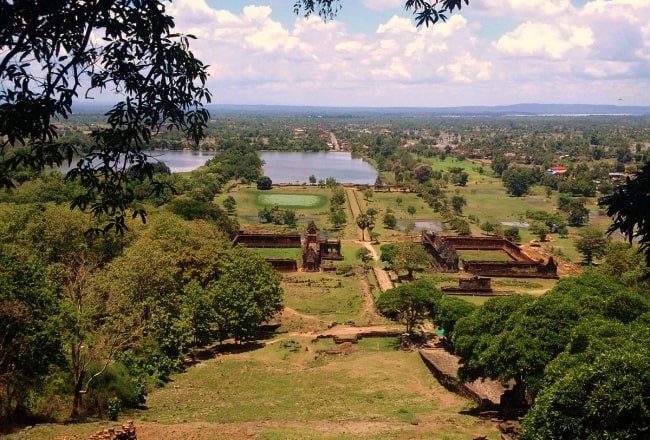
What is Wat Phou Festival?
Wat Phou temple plays host to an annual festival in February which sees thousands of people climb the steep steps to the temple top to leave offerings of flowers and incense. As one of the region's most sacred sites, monks travel from all over Laos and neighboring Thailand and Cambodia to attend.
The Vat Phu Festival takes place every year, on the 15th day of the increasing moon of the 3rd month (in January-February) and coincides with the Magha Puja Buddhist Festival. It is based on the Buddhist Lunar Calendar. The celebration is held during the third lunar month of the year because Buddha is said to have delivered certain of his teachings at this time.
On this day long ago in India, 1,250 of Buddha’s followers came to see him on their own initiative without a scheduled meeting. All of these followers were said to be “enlightened ones” whom Buddha himself then ordained as teachers. He gave them the main, core teachings of Buddhism to pass on. These teachings were: cease from evil, do good, and cleanse your mind.
This day continue to be celebrated at this actual time. The believers come from a great distance to attend the ceremony ; some of them even come from Thailand and Cambodia; it is also the opportunity for surrounding plain and mountain populations to meet each other, maintaining these relations since time put off.
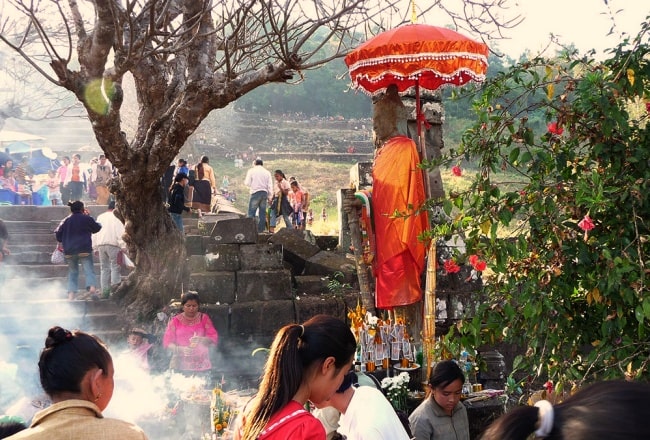
Festive activities
Boun Wat Phou is the largest festival in Southern Laos. People take part in various activities during the three-day celebration.
Processions, recitals, and chants take place during the three days festival. Boats racing (dugouts), game "catch-ducks"; volleyball and petanque competitions are also organized.
During the official Opening event, speeches by the authority and a procession by the Districts of the Champasak province. This procession shows the different specialties (music, dances, products) of the districts and their traditional dresses.
The local authorities want to maintain some traditions and to preserve the sacred sense of the place.
In the evening, various attractions as well as some concerts are used to occur as a usual profane aspect.
Click here to view the sample of Wat Phou festival schedule in 2011
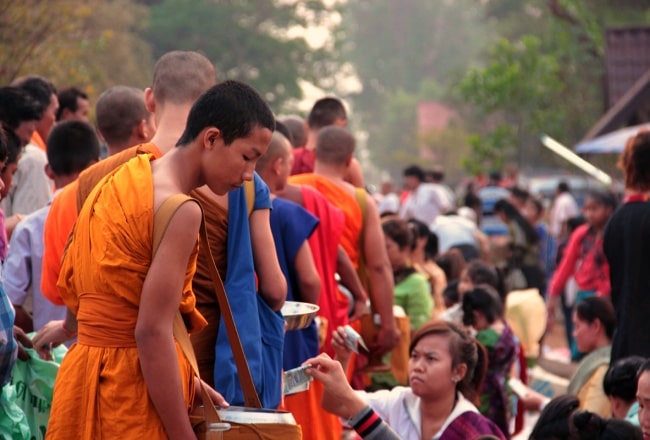
What to do beyond the festival?
For those looking for activities away from the crowd, cycling around Champasak and crossing to Don Daeng is your best option. There, on the little sandy island, you can have a perfect contrast to the festivities on the other side. Don Daeng is 8km long, with rice fields in the middle surrounded by villages. Peaceful and quiet, you can spend countless days basking in the sun like the water buffaloes scattered along the sand. For accommodation, there are great options to choose from based on your budget, from homestays to the up-market La Folie Lodge. A single trail follows the perimeter of the island, so it is difficult to get lost. If you want a more guided route, there are free cycling maps available at the local tourism office (Pakse, Champasak, and Don Daeng).
You can also spend time visiting the nearby Bolaven Plateau, 4000 Islands, Ban Khiet Ngong, or Khone Phapheng Waterfall. Contact us for more detail.
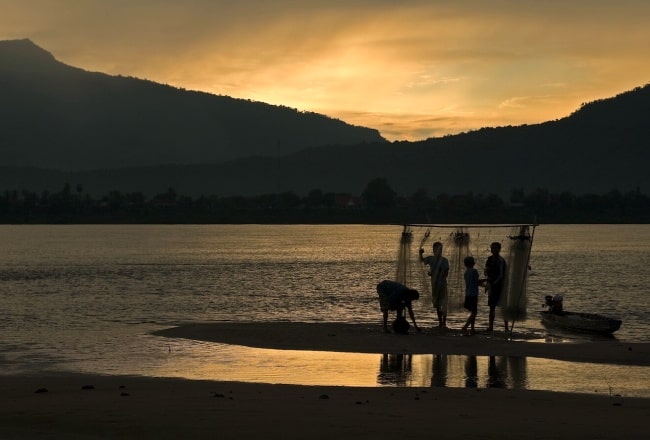
When is Wat Phou Festival?
The festival follows Lao lunar calendar, so that the date will change every year. We only know that the festival will take place around mid-February, the exact date will be confirmed extremely late at around 1-2 months before the festival. This is the con that makes the festival not famous as it should be.
Where is Wat Phou Festival?
The magnificent Wat Phou is located 10km from Champasak’s town center. The Wat Phou complex is the cultural heart of a wider historical landscape on the plains of Champasak District, ranging from the Mekong River to the Phou Kao Mountains.
Check the below Google Maps for your reference.
Where to stay to join Wat Phou festival?
Champasak town has a few guest houses for those looking to spend a night near the temple (it is about 10km away) and getting an early start. It is a nice little town and accommodation is much cheaper than in Pakse, so I’d definitely recommend doing this. You won’t have any trouble finding a place to stay if you just show up and look around.
If you prefer to plan ahead, here is our recommendation:
1. Budget option: Nakorn Café Riverview | Link
Set in Champasak, Nakorn River View has a restaurant, bar, garden, and free WiFi. Boasting family rooms, this property also provides guests with a children's playground. There is free private parking and the property offers paid airport shuttle service. At the guest house, all rooms have a patio with a river view. With a private bathroom fitted with a shower and free toiletries, rooms at Nakorn River View also have a lake view. All guest rooms will provide guests with a fridge. The accommodation offers a sun terrace.
2. Mid-range option: Residence Bassac | Link
Located in the attractive, small town of Champasak, once known as Bassac, from which the hotel takes its name, the town has a unique character and comprises nine villages. The hotel has 14 rooms – 4 Suite Duplex rooms, 2 Suite Mekong Side, 4 Deluxe Garden View rooms, 2 Superior Double Rooms, and 2 Superior Twin rooms, all spacious, soothing and elegant.
3. High-end option: The River Resort | Link
The River Resort is located on large, naturally landscaped grounds bordering on the stunningly beautiful Mekong Rivers cape. The Resort features 20 stylish, spacious guestrooms, most with panoramic River views and mountain sunset views. Each room has an indoor and outdoor shower. The Resort’s open-air Sala, overlooking the Mekong, includes a lounge and bar, restaurant featuring Western and Lao cuisine, and open rooftop terrace for dining and private parties. Guests enjoy relaxing at the Resort’s infinity swimming pool and Laotian massage pavilion.



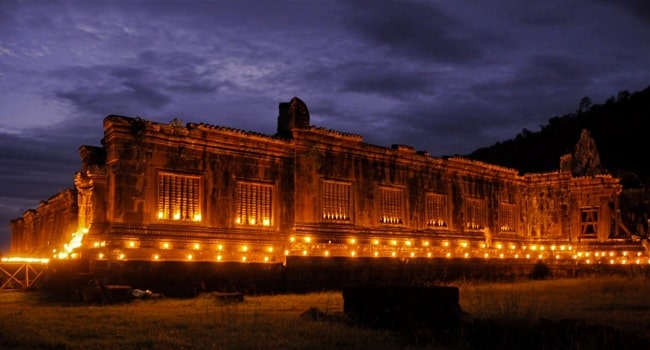

 05/01/2026
05/01/2026


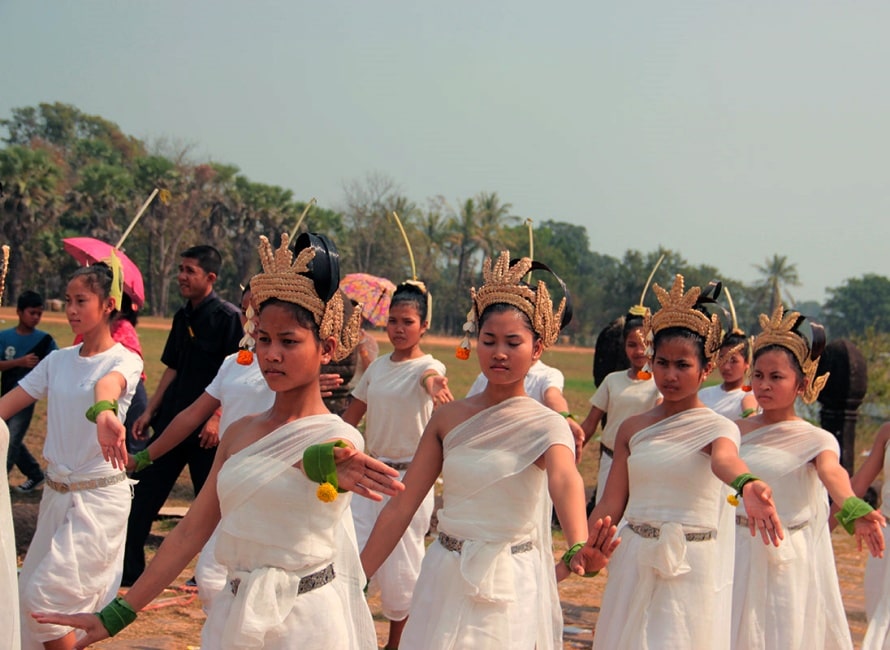
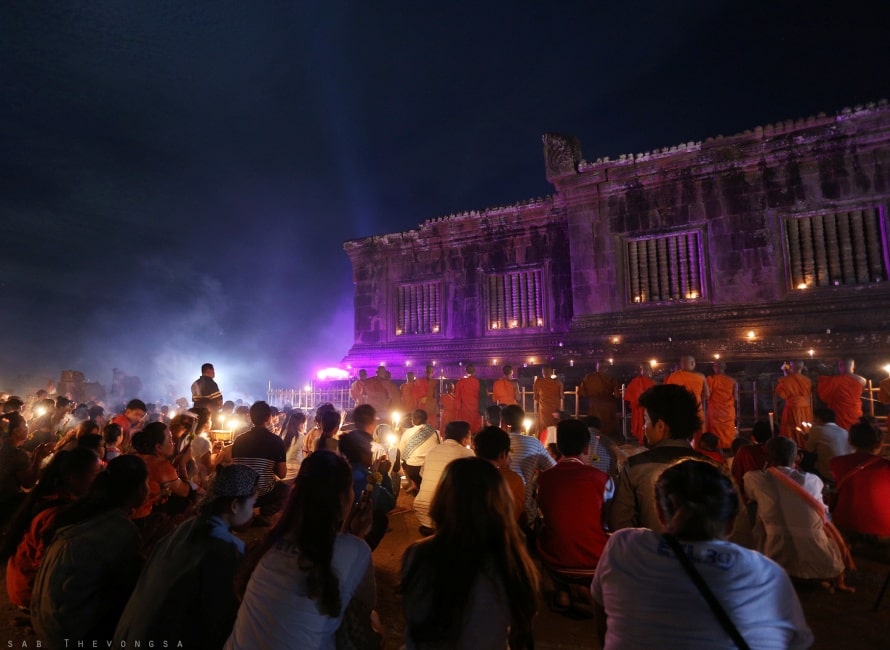

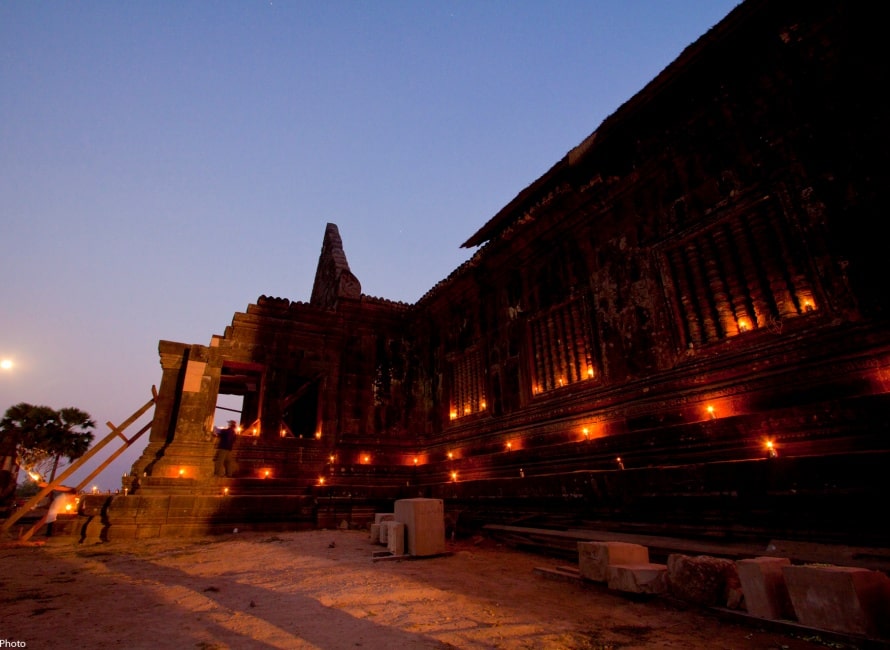
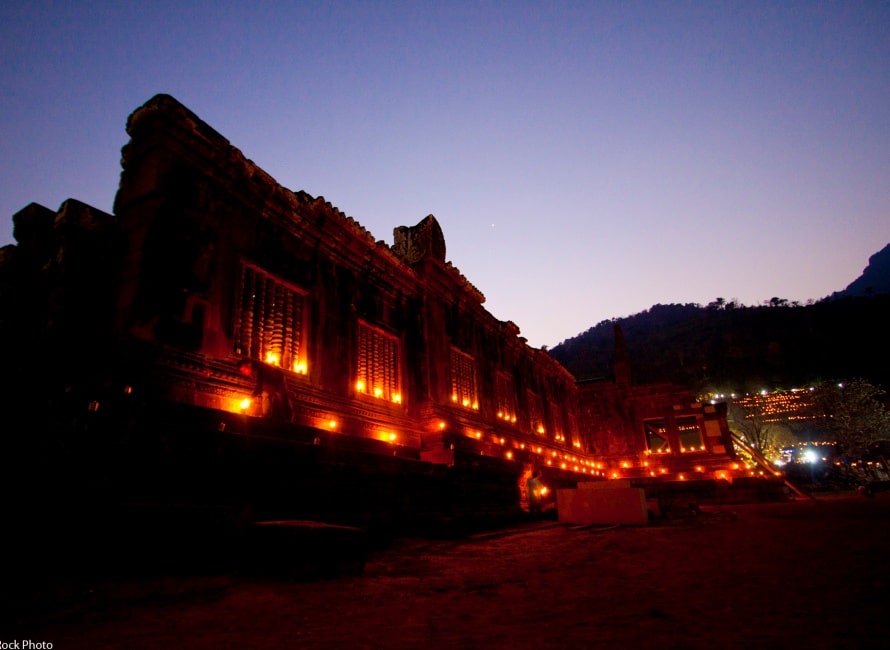
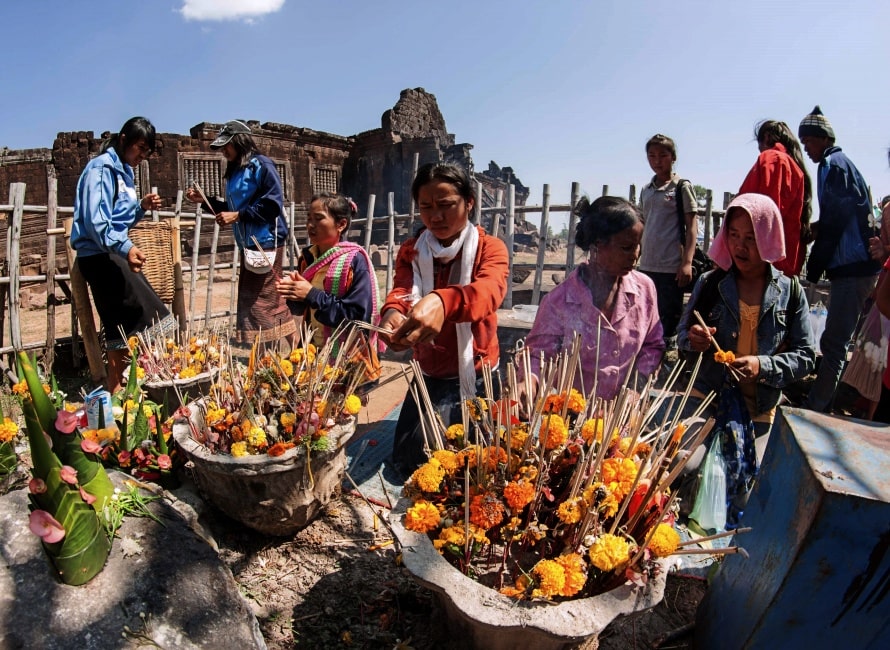
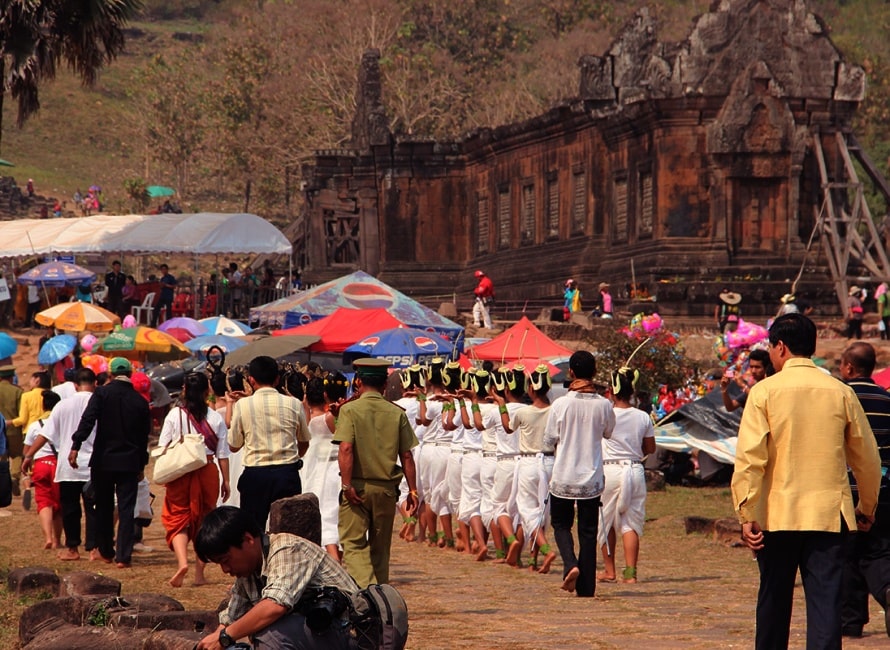

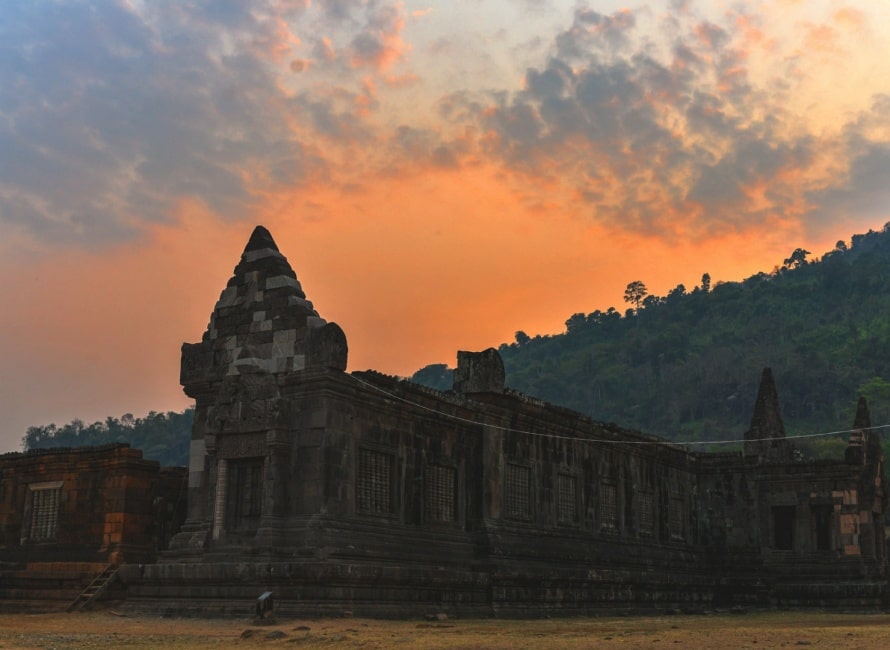



















Jolie LIEMMy name is Jolie, I am a Vietnamese girl growing up in the countryside of Hai Duong, northern Vietnam. Since a little girl, I was always dreaming of exploring the far-away lands, the unseen beauty spots of the world. My dream has been growing bigger and bigger day after day, and I do not miss a chance to make it real. After graduating from the univesity of language in Hanoi, I started the exploration with a travel agency and learning more about travel, especially responsible travel. I love experiencing the different cultures of the different lands and sharing my dream with the whole world. Hope that you love it too!